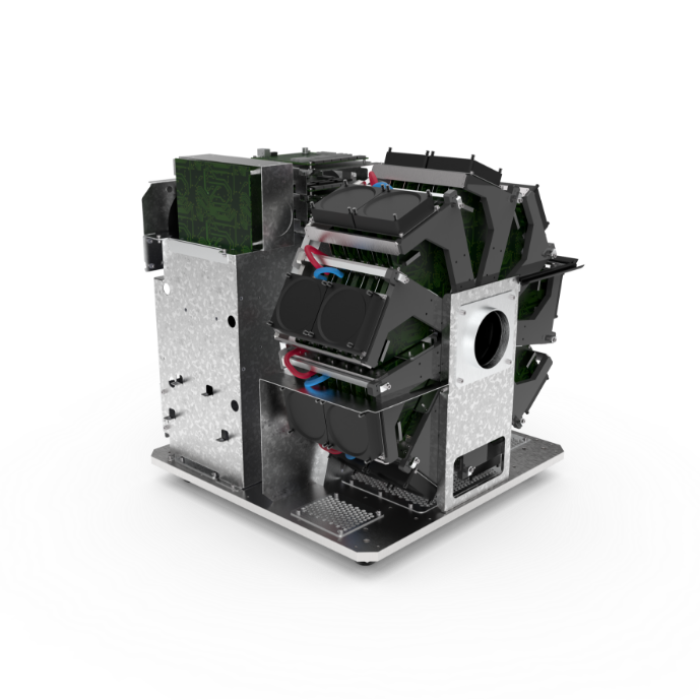Preclinical comparative study of 18F-AIF-PSM-11 and 18F-PSMA-1007 in varying PSMA expressing tumors
In this study by Piron et al., the MOLECUBES β-CUBE and X-CUBE were used as a non-invasive tool to visualize and quantify [18F]AIF-PSMA-11 and [18F]PSMA-1007, two prostate-specific membrane antigen (PSMA) targeting PET radiotracers, in mice with varying PSMA expressing tumors.
Research question
Prostate-specific membrane antigen (PSMA), a transmembrane protein that is upregulated on prostate cancer cells, has shown to be an excellent target for molecular imaging of prostate carcinoma. As a result, a wide variety of [18F]-labelled PET radiotracers have been developed, including [18F]AIF-PSMA-11. However, limited data is available on the comparison of [18F]AIF-PSMA-11 with other [18F] labelled PSMA PET tracers. This preclinical study aimed to compare [18F]AIF-PSMA-11 and [18F]PSMA-1007.
Experiment
This study included intra-individual comparison of mice bearing prostate carcinoma xenografts with varying PSMA expression as well as an ex vivo distribution with [18F]AIF-PSMA-11 and [18F]PSMA-1007. Prostate cancer cells with varying PSMA expression levels (high PSMA expression, low PSMA expression, and no PSMA expression) were selected, suspended and injected in NOD/SCID mice. All mice underwent two PET/CT scans with both [18F]AIF-PSMA-11 and [18F]PSMA-1007, followed by immunohistochemical evaluation of PSMA expression levels for each cell line xenograft. Additional mice bearing high PSMA expression xenografts were subjected to ex vivo distribution and received either [18F]AIF-PSMA-11 or [18F]PSMA-1007.

Results
Both PSMA tracers were clearly visible in high PSMA expression and low PSMA expression tumors, with the uptake being less intense in the latter. No activity uptake was observed in no PSMA expression tumors. Tumor-to-organ ratios did not differ significantly in high PSMA expression tumors but were higher for [18F]AIF-PSMA-11 in low expression tumors. Both tracers show uptake in healthy organs including salivary and lacrimal glands, kidneys and bladder. PSMA-1007 uptake was higher in the liver, gallbladder, small intestines and glands, compared to AIF-PSMA-11. Ex vivo biodistribution data confirms the imaging results. These results suggest that [18F]AlF-PSMA-11 can be useful for the detection of lesions in proximity to organs with higher [18F]PSMA-1007 uptake such as the gallbladder, liver, heart, and small intestines. Prostate cancer tumors with a low PSMA expression have been shown to be a negative prognostic factor for overall survival. Nevertheless, it remains important to detect the presence of low PSMA-expressing metastases to aid in the prognostication and decision-making process regarding treatment plan. The higher tumor-to-organ ratios for [18F]AlF-PSMA-11 compared to [18F]PSMA-1007 may therefore be beneficial for the detection of low PSMA-expressing tumors. Furthermore, the detection of non-prostatic tumors is a potential application as these are mostly characterized by low PSMA expression.
